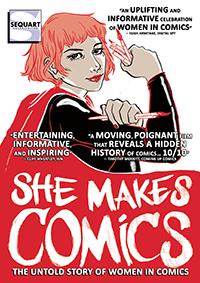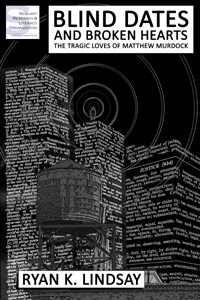With Halloween coming up, the need to compile a list of horror films to watch increases, so consider this my modest proposal for a film you may not be familiar with. True horror aficionados may be rolling their eyes right now, but while I am aware that my recommendation is not an obscure choice, I firmly belief that it is a classic many casual horror fans may not know anything about.

Daughters of Darkness is a 1971 English-language, German-French-Belgian horror film by Flemish director Harry Kümel starring a French film legend, an American actor, a Canadian model, and a German blue movie star. Despite its multicultural production, Kümel argues in Mark Gatiss’ Horror Europa that it is a very Belgian film due to the influence of surrealism and expressionism – two movements that have had a profound impact on Belgian art. Daughters of Darkness is about newlyweds Stefan and Valerie, an English aristocrat and a Swiss “commoner”, played by American actor John Karlen and Miss Québec Danielle Ouimet, respectively, who on their way to England check in at a hotel in Ostend where they are soon joined by Countess Elizabeth Báthory and her secretary Ilona, played by Delphine Seyrig and Andrea Rau, who turn out to be lesbian vampires.
Daughters of Darkness was not the first film to feature lesbian vampirism. From Universal’s 1936 film Dracula’s Daughter up to Jesús Franco’s Vampyros Lesbos from 1971 there had already been quite a few films dealing with this theme. However, it may have been the first film not to reinstall a heteronormative status quo at the end of the film. Whereas other films dealing with this subject had been portraying the lesbian vampire as a menace that has to be defeated so that the heterosexual couple could eventually be reunited, Daughters of Darkness does the opposite.
Stefan and Valerie’s relationship is fragile and unhealthy. Stefan does not love Valerie, he merely loves to control her. He abuses her physically and emotionally and starts having an affair with Ilona while on honeymoon with Valerie. All four characters are conflicted, but Stefan is clearly the most dislikeable one. Two out of the four characters are vampires, but Stefan is the only monster.
Unlike other lesbian vampire films, Daughters of Darkness does not portray the Countess as having to use witchcraft, force or abuse to win Valerie over. She does so by reasoning with her, using a feminist critique of Stefan’s behaviour. Stefan, the Countess argues, sees Valerie as an object. He does not love her the way she does. This leads to the film’s climax; Valerie chooses the Countess, Stefan abuses her once again, but Valerie and the Countess fight back, killing him. Valerie’s vampirism is not a curse or a burden. It is her liberation.
Nonetheless, the characters’ motivations are much more ambiguous and Daughters of Darkness is not about presenting men as evil (even though in one scene the Countess says they are), but about the nature of love. The Countess may be the one liberating Valerie from a life of abuse and pain but she is also the one who emotionally abuses Ilona. Kümel even tells Gatiss in the above-mentioned documentary that he dressed her in nazi colours because “she’s a demagogue and dictator.” She dominates their relationship with Ilona stating at one point that she would like to die. The Countess even controls Ilona’s interaction with Stefan and Valerie, telling her off for scaring Valerie without the Countess’ permission, while sending her to have sex with Stefan which ultimately leads to her death. Consequently, Ilona’s death is a terrible accident caused by a sadist Stefan who is about to rape her.
Ilona is merely a pawn in the Countess’ game (so is everyone else) and Stefan’s object of pleasure, much like Valerie is. Even the Countess can be seen as a means for Valerie to break free from Stefan, not someone she truly loves. Ultimately, the film paints a bleak picture of love and personal relationships. Whether you are a lesbian vampire or an English aristocrat, love does not really exist. It is but a struggle for dominance and power over someone else. In the end, you are either the abuser or the abused.
An original take on lesbian vampirism, a thought-provoking portrayal of love, visuals that owe equally to humorous surrealism and beautiful expressionism, and a vampiric duo that looks as if Marlene Dietrich and Louise Brooks are staying for Halloween are some of the reasons Daughters of Darkness works so well. And I didn’t even mention Stefan’s Mother. If you are still looking for a film, consider (re-)watching this 1970s chic.




















































